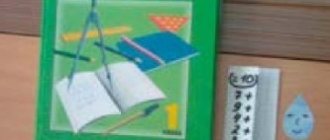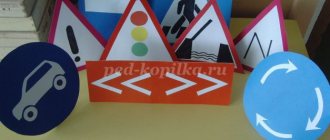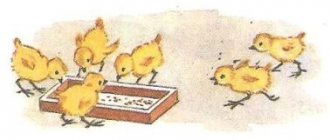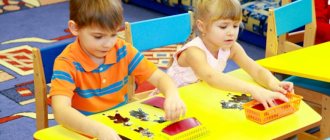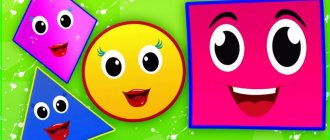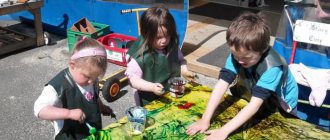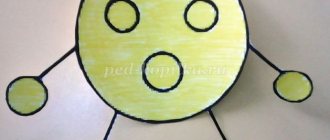Coming up with an idea
Nowadays children actively watch TV, where they show exciting adventures of superheroes. The stores have a lot of toys and games based on Hollywood blockbusters.
They also sell various superhero costumes, and on New Year’s holidays many children come wearing these costumes.
The children's interest is obvious; they want to imitate these characters, so we will build our script based on the MARVEL heroes.
Since our lesson is mathematics, and the smartest superhero is, of course, Iron Man: Tony Stark. If he had not studied mathematics, he would never have made his suit. And therefore the main character of our lesson will be Tony Stark.
From films we know that iron man always saves the world and makes it better. This time he needed the help of young heroes from our kindergarten.
There is an idea, then you need to write a script, but before that you need to write a list of problems that the guys will solve.
Problems for a math lesson in kindergarten
Preschoolers need to be able to count from 1 to 10 forwards and backwards. Solve simple arithmetic problems. Develop auditory attention and coordination of movements, know the names of geometric shapes and be able to make other shapes from them. You need to know the days of the week and in what order they occur.
And also seasons and months. Be able to navigate on a sheet of squared paper. Solve problems as a team, helping each other. Based on this data, we will compile an approximate list of tasks that can be used in lessons with preschoolers.
You don't need to use all the assignments, stick to your script and stay within the lesson time frame.
Mathematical warm-up
- Count from 1 to 10 in order;
- Count backwards from 10 to 1;
- Count from 1 to 5, from 3 to 8, use different sequences within 10;
- Name the neighbors of the numbers 4, 5,6, etc.;
- Name the numbers that are between two numbers, for example, between 4 and 6 etc.;
- Compare numbers to see which number is larger or which is smaller;
- Name the previous and subsequent numbers.
Counting items
In this task, children must count pre-arranged objects or some animals in the picture, etc.
Easy puzzles
Here you can ask questions where the child will need to remember an object that is familiar to him or an animal that he knows and count, for example, how many legs or ears he has. For example: “How many fingers are on one hand?” or “How many ears do two dogs have?”
Geometric figures
To study shapes, you can let the children make a joint appliqué or, on the contrary, disassemble into geometric shapes an object familiar to them, which you have previously made from cubes. For example, you can make a car or a steam locomotive out of cubes and ask the children to tell what shapes it consists of.
To consolidate knowledge about different figures, you can use counting sticks and ask the children to make certain figures, and then count the number of sticks used to make this figure.
Mathematical dictation
In this task, children need to draw a picture on a piece of paper. The teacher hands out prepared notebook sheets in the box where the initial position of the pencil is marked with a dot. The teacher names the number of cells along which you need to draw a line in a given direction. After finishing the dictation, the children will have a drawing on their pieces of paper.
Seasons and days of the week
A task in which children answer questions about the seasons and days of the week.
Arithmetic examples
At this stage of the math lesson, children solve simple examples of addition and subtraction. To do this, you can use toys or special cards.
Auxiliary materials
From the list of tasks, we select those options that we liked and perhaps add our own. For each task you will need appropriate materials.
These can be pencils, pieces of paper, glue, counting sticks and other auxiliary items. You also need to prepare children's songs for musical breaks.
Depending on the scenario you choose, you will need appropriate costumes and pictures, as well as other attributes and decorations to attract the child's attention.
To encourage children, prepare sweets or souvenir toys.
Lesson summary
At the end of the lesson, we congratulate the children for successfully completing all tasks. We briefly recall all the completed tasks, you can give gifts or encourage the kids in some other way. Don’t forget to praise the children after each completed stage and take short musical breaks or show short excerpts from cartoons.
Sample notes for a math lesson for children in kindergarten
Lesson title: “Superhero School”
Purpose of the lesson: To instill an interest in mathematics, to teach children to interact with each other when solving one problem.
Check and consolidate knowledge:
- counting to 10;
- composition of numbers within 10;
- days of the week;
- geometric figures;
- addition and subtraction.
Preliminary work:
Didactic games for sensory development: “Name the figures”, “Building a castle”, “Draw a fairy-tale hero”. Didactic games: “Days of the week”, “What, where?”. Games for attentiveness. Numbers from 1 to 10.
- Solving simple arithmetic problems, solving logical problems.
- During the classes:
- Educator:
Guys, today I received an email from Tony Stark. Who knows who this is? This is Iron Man. Since childhood, he loved solving various mathematical problems, became very smart and was able to make an iron man suit himself. If he had not studied mathematics, he would never have been able to design such a suit. He writes that he needs your help.
Shall we help him?
First task: Solving the code
Goal: We strengthen the ability to count in the mind and think logically, and understand questions by ear. We repeat the material covered.
- Materials: A box with a picture of Iron Man pasted on and a white field for entering the code, a pencil, masks and an envelope with tasks.
- Execution: The teacher takes out a box and the children sit around it.
Tony sent me a box of activities and gifts for you. But to open it we need to solve the code, and to do this we need to answer 10 questions, since the code consists of ten digits, we will enter each answer in the input field on the box
First steps into mathematics. notes notes in the preparatory group - a child in kindergarten
The summary of the educational activities in the preparatory group was compiled by teachers Olga Anatolyevna Sorokina, MADOU Child Development Center - kindergarten No. 41 “Rosinka”, Nizhnevartovsk.
The GCD summary in the preparatory group is included in the section “First steps in mathematics.”
GCD tasks:
- Continue to learn how to compose arithmetic problems and write down their solutions using numbers.
- Strengthen children's knowledge about geometric shapes.
- Continue to form children's ideas about days of the week, months and numbers.
- Strengthen the ability to navigate on a sheet of paper in a square.
- Strengthen the ability to distinguish between spatial representations: left, right, middle, top, bottom, behind, in front.
Developmental tasks:
- Create conditions for the development of logical thinking, intelligence, and attention.
- Develop ingenuity, visual memory, imagination.
- Contribute to the formation of mental operations, speech development, and the ability to give reasons for one’s statements.
